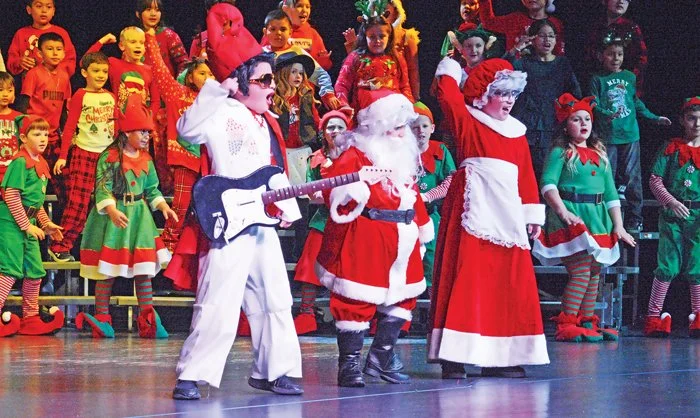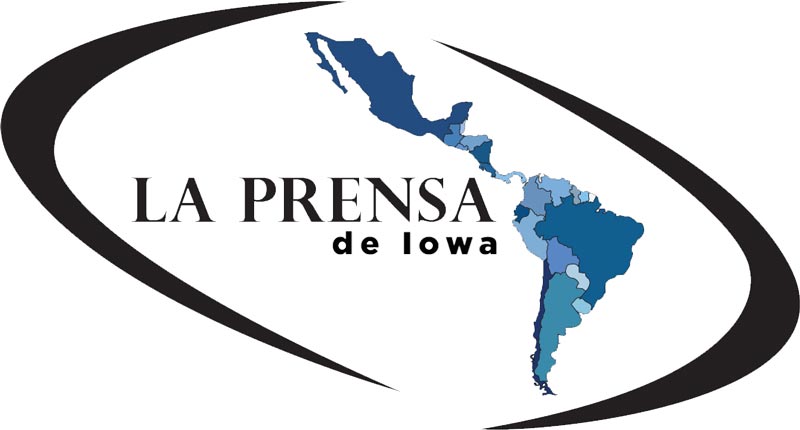ISU apoya a las personas de color
/Toyia Younger vicepresidente de Asuntos Estudiantiles de ISU
Victoria Reyna-Rodríguez
Especial para LA PRENSA Iowa
La vicepresidenta sénior de Asuntos Estudiantiles de la Iowa State University (ISU), Toyia Younger expresó que aunque ha pasado la mayor parte de su vida en la educación superior, ser la única persona de color en la sala aún puede ser intimidante e incómodo para ella.
Toyia también se desempeñó como vicerrector en la Universidad de Towson, director de Asuntos Estudiantiles del Sistema de Universidades y Colegios del Estado de Minnesota y vicepresidente de la Asociación Estadounidense de Colegios y Universidades.
“Todos esos puestos, con la excepción de Minnesota, estaban en el área metropolitana de D.C., por lo que estaban en lugares que eran más diversos que la Universidad Estatal de Iowa,” dijo.
Toyia dice que en su vida ha experimentado más contacto con diversidad en los otros lugares que ha estado antes de mudarse a Ames, Iowa.
“Cuando llegué a Iowa Statel University [...] Esta es probablemente la institución menos diversa en la que he trabajado. Y cuando hablo de diversidad, me refiero a números absolutos,” dijo.
Según el Informe anual de la universidad tenía un total de 9.6% de personal ejecutivo, administrativo y gerencial perteneciente a minorías, y solo un 16.1% del personal perteneciente a minorías en total.
“Asistí a grandes instituciones predominantemente blancas [...] Estoy acostumbrada a grandes instituciones predominantemente blancas. El choque cultural más grande probablemente ha sido el haberme mudado a Iowa”.
Toyia dice que la historia que siempre cuenta es cuando llegó por primera vez a Iowa, otra mujer negra en Target le preguntó que si ella nueva en la ciudad porque nunca antes la había visto allí. Cuando Toyia se presentó como la nueva vicepresidenta de Asuntos Estudiantiles del estado de Iowa, la mujer sonrió emocionada e incluso la visitó en su nueva oficina la siguiente semana.
“No fue hasta ese momento que me di cuenta de que había tan pocos administradores, profesores y personal de color que era tan notorio. Ese fue mi primer choque cultural real. ‘Pensé, ¿en qué me metí?'”
Toyia dijo que lentamente comenzó a darse cuenta del gran impacto que tenía en la universidad y en la ciudad de Ames no solo como la persona de color de más alto rango en el campus, sino también como administradora de color en esta universidad.
“Nunca he sido alguien que se deje atrapar por los títulos o el prestigio [...] Pero hay momentos en los que me siento alrededor de la mesa y miro a mi alrededor y pienso, 'wow, soy la única persona de color en la sala, Y estoy acostumbrada, pero eso no significa que a veces no me incomode.”
Toyia dice que incluso hay momentos en los que siente que se espera que hable sobre ciertos temas en las reuniones solo porque es la única persona de color en la sala.
“Entonces, a veces, no me gusta [...] No, no soy la representante que hablará por todas las personas negras en el campus,” dijo Toyia.
Ella reconoce que ella, su personal, sus compañeros y la universidad en general pueden estar haciendo más para contribuir al apoyo, el bienestar y el éxito de la facultad y el personal de color de la universidad.
“Siempre hay más que las instituciones pueden hacer,” dijo Toyia “Sí, tenemos estos grupos de afinidad de profesores, pero ¿qué tipo de apoyo les ofrecemos cuando están programando? ¿Qué otros mecanismos de apoyo ofrecemos fuera de estos grupos formalizados?”
Toyia dijo que a menudo ha estado en situaciones profesionales hablando sobre el reclutamiento y la retención de profesores y personal de color y cómo se ve eso, pero sus pensamientos son: ¿quiénes son las personas con las que podemos conectar al personal y los profesores potenciales?
También dice que la retención y el reclutamiento son más que crear una comunidad en el campus, pero fuera del campus. Por ejemplo, ¿dónde pueden arreglarse el cabello los negros en Ames? ¿Dónde está la tienda de comestibles asiática local? ¿Hay alguna comida étnica en la zona?
“Creo que la lucha no es que la universidad no quiera apoyar, es que no siempre saben cómo. Lo que necesitan las personas de color puede no parecer importante para otras personas”, dijo Toyia.
Yamille Pérez, especialista del Programa de Mujeres en la Ciencia y la Ingeniería de ISU, compartió una foto de ella y sus compañeros de ingeniería de su tiempo como estudiante en la universidad.
Yamille Pérez, especialista del programa para mujeres en ciencia e ingeniería en Iowa State y exalumna de Iowa State, compartió por qué dedica tiempo y trabajo extra para asegurarse de que los estudiantes de color en el campus se sientan apoyados y animados.
“Quiero estar en esos espacios porque sé lo que es ser un estudiante que no ve esos modelos a seguir en la facultad y el personal,” dijo Yamille.
También compartió su experiencia con la falta de diversidad en áreas de su vida, particularmente en su lugar de trabajo anterior, Caterpillar, donde incluso se le pidió que dirigiera un programa para mujeres de color.
“Aunque me encantaba trabajar en esos espacios, yo era en gran medida la única persona que no era blanca,” dijo Yamille.
Yamille dijo que en todos los espacios, profesionales, institucionales, lugares de educación y más, hay un crecimiento de personal en lo que la diversidad se refiere, “yo quiero más gente como yo […] quiero más gente, más diversidad. Eso es todo lo que quiero."
Translation
Support for students, faculty and staff of color at Iowa State
Iowa State Senior Vice President of Student Affairs, Toyia Younger
Victoria Reyna-Rodríguez
Special for LA PRENSA Iowa
Senior Vice President of Student Affairs, Toyia Younger, says that although she’s spent most of her life in higher education, being the only person of color in the room can still be intimidating and uncomfortable for her.
Younger has also served as Assistant Provost at Towson University, Chief Student Affairs Officer for Minnesota State College and Universities System and Vice President at American Association of Colleges and Universities
“In all of those positions, with the exception of Minnesota, they were in the greater D.C. area, so they were at places that were more diverse that Iowa State University,” Younger said.
Younger said she experienced more diversity in most places of her life before moving to Ames, Iowa.
“When I came to Iowa State [...] This is probably the least diverse institution I’ve ever worked at. And when I’m talking about diversity, I mean just sheer numbers,” Younger said.
According to the Annual Diversity Report, Iowa State had a total of 9.6% minority executive, administrative and managerial staff, and only 16.1% minority staff total.
“I attended large predominantly white institutions [...] I’m used to large predominantly white institutions. The bigger culture shock was probably moving from the East Coast to Iowa.”
Younger said the story she always tells about when she first got to Iowa is another Black woman at Target recognizing that she was new to town, because she’d never seen her there before. When Younger introduced herself as the new Senior Vice President of Student Affairs at Iowa State, the woman beamed with excitement, and even came to visit at her new office the following week.
“It wasn’t until that moment that I realized there were so few administrators, faculty and staff of color that it stook out so broadly. That was kind of my first real culture shock. ‘Like, oh, what did I get myself into?’”
Younger said she slowly began to realize the huge impact she had on the Iowa State and Ames communities as not only the highest ranking person of color on campus, but as an administrator of color at this university.
“I’ve never been one who’s caught up in titles or prestige [...] But there are times where I sit around the table and I look around and think, ‘wow, I am the only person of color in the room,’ And I’m used to it, but that doesn’t mean it doesn’t bother me sometimes.”
Younger says there are even times where she feels like she’s expected to speak on certain topics in meetings just because she is the only person of color in the room.
“So sometimes, I don’t [...] Like, nope, I’m not the representative that’s gonna speak for all Black people on Iowa State’s campus,” Younger said.
Younger acknowledged there’s more she, her staff, her peers, and the university as a whole could be doing to contribute to the support, wellness and success of faculty and staff of color at Iowa State.
“There’s always more that institutions can do,” Younger said. “Yes we have these faculty affinity groups, but what type of support do we offer for them when they’re doing programming? What other support mechanisms outside of these formalized groups do we provide?”
Younger said she’s often been in professional situations talking about recruitment and retention of faculty and staff of color and what that looks like, but her thoughts are: who are the people we can connect potential staff and faculty with?
Younger says retention and recruitment is about more than creating a community on campus, but outside of campus. For example, where can Black folks get their hair done in Ames? Where’s the local Asian grocery store? Is there any ethnic food in the area?
“I think the struggle isn’t that the university doesn’t want to support, it’s that they don’t always know how. What people of color need, might not seem important to other people,” Younger said.
Yamille Pérez, a specialist for Iowa State's Women in Science and Engineering Program, shared a photo of herself and her fellow engineers during her time as an undergraduate at the university
Yamille Perez, Program Specialist for the Program for Women in Science and Engineering at Iowa State and Iowa State alumna shared why she puts in extra time and work to make sure students of color on campus feel supported and uplifted.
“I want to be in those spaces because I know what it’s like to be a student not seeing those role models in faculty and staff,” Perez said.
She also shared her experience with lack of diversity in areas of her life, particularly at her previous place of employment, Caterpillar, where she was even asked to run a program for women of color.
“Although I loved working in those spaces, I was very much the only non-white person,” Perez said.
Perez said in all spaces, professional, institutional, places of education and more, that there is growth in diversity, “I want more people like me […] I want more people, more diversity. That’s all I want.”
Finally, Perez mentioned intersectionality. A term coined by Kimberle Crenshaw that describes the interconnection of race, class and gender.
“The word intersectionality […] I wish I had that word ten years ago. I just want that,” Perez said.












































